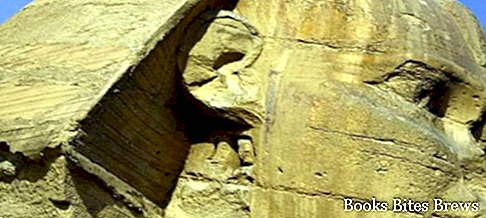Travel itinerary to visit Egypt in a week, including the main places to see, a holiday to discover the ancient Egyptian civilizations.
Ancient Egyptian civilization
Thanks to the ancient Egyptian civilization, Egypt has always played an extremely important role in world history, reaching today to represent one of the most important states of Africa, a holiday destination, with an important strategic geographical position towards the Middle East.
Ancient Egypt indicates the civilization that developed in remote eras, in that narrow strip of fertile land that extends along the two banks of the Nile river, starting from the border with Sudan up to the mouth in the Mediterranean Sea.
Geographic location
Egypt, located in the northern part of Africa, is also considered a part of Asia, as it also includes the Sinai peninsula in its territory.
The western part of Egypt is bordered by Libya, the southern part with Sudan, the eastern part with the Red Sea and the northern part with the Mediterranean.
Mostly covered by the sands of the Sahara desert, it has vast uninhabited areas, the population lives mainly along the banks of the Nile, the very long North African river over six thousand kilometers long.
Itinerary 7 days
Alexandria, an important Egyptian port, is located on the coast bathed by the Mediterranean sea and is the second largest city in the country by population, located just over two hundred kilometers from Cairo, west of the Nile delta.
This city, founded by Alexander the Great between 332 and 331 BC, is home to the ancient Alexandrina Library and the ancient Patriarchate of Alexandria, and there are also beautiful beaches.
Cairo is the capital and largest city of Africa, in thirteenth place by number of inhabitants in the world.
It extends over the bank and the islands of the Nile, in the northern part of Egypt, just south of the point where the river ends the desert course and is divided into three branches, which form the region of the Nile delta.
The city also includes the two islands of Gezira and Roda, connected to each other by bridges over the Nile, where there are mainly government offices and buildings.
Recommended readings- History Egypt in brief
- Nuweiba: what to see between the Gulf of Aqaba and Sinai
- Cairo: what to see in the capital of Egypt
- Marsa Matrouh: what to see
- Famous Egyptian pharaohs: which are the most important
The older part, characterized by narrow streets very crowded at peak times and by ancient mosques, is located east of the Nile, while the west part was built following the example of Paris and therefore with wide avenues, public greenery and large squares .
In Cairo there is also an Egyptian Museum, considered the most important in the world and, in the suburb of Giza, the pyramids, including the famous pyramid of Cheops.
Navigation on the Nile, one of the longest rivers on earth, allows you to cross the Sahara desert to a village of luxury boats, with stops in Luxor and in the Valley of the Kings, reaching the spectacular Aswan dam.
Luxor, city of central-eastern Egypt located in the territory where the ancient city of Thebes was located, constitutes one of the stops along the Nile river, located near Karnak, to which it is inextricably linked for the important archaeological remains that made it become a tourist destination with a high flow of visitors, thanks also to the interesting museum present.
In Luxor are preserved the ruins of the great temple built by the pharaoh Amenhotep III in the fourteenth century BC, later enlarged by Tutankhamun and Ramesses II.
The Valley of the Kings, where the pharaohs, sovereigns of ancient Egypt who succeeded each other in various eras, are buried, is located nearby.
Not far away is the valley of the Queens where instead the wives of kings and princes were buried.
The Aswan dam, the largest structure of this type on the Nile river, located near the city of Aswan, was built at the turn of the nineteenth and twentieth centuries, to regulate the irrigation of the surrounding land, made fertile by silt, which is a sediment composed of nutrients, left by the river during the periodic floods.
The Egyptian coasts of the Red Sea overlook Sharm el-Sheikh, Hurghada and Marsa Alam, popular tourist resorts that offer well-equipped hotel facilities.
Mount Sinai
The top of Mount Sinai, located at 2288 meters above sea level and located in the southern part of the peninsula of the same name, can be reached through the two paths of Siket El Bashait and Siket Sayidna Musa, which can be traveled on foot or riding a camel led by a local Bedouin.
At the foot of Mount Sinai is the Monastery of Santa Caterina which, built at the behest of Emperor Justinian in 527, is traditionally recognized as the place where God manifested himself to Moses under the guise of a burning bush, which was not consumed despite the flames.
This monastery, a tourist destination and pilgrimage site, is located a short distance from Sharm El Sheikh and other renowned seaside resorts in Egypt.
At the top of the mountain there is a chapel of Greek Orthodox origin dating back to 1934, built on the ruins of a sixteenth-century church, where the rock on which the Lord was said to have engraved the Tables of the Law, or the Ten Commandments, is said to be kept.
Not far away is also the Cave of Moses, considered the refuge of Moses before he received the tables of the Law.




